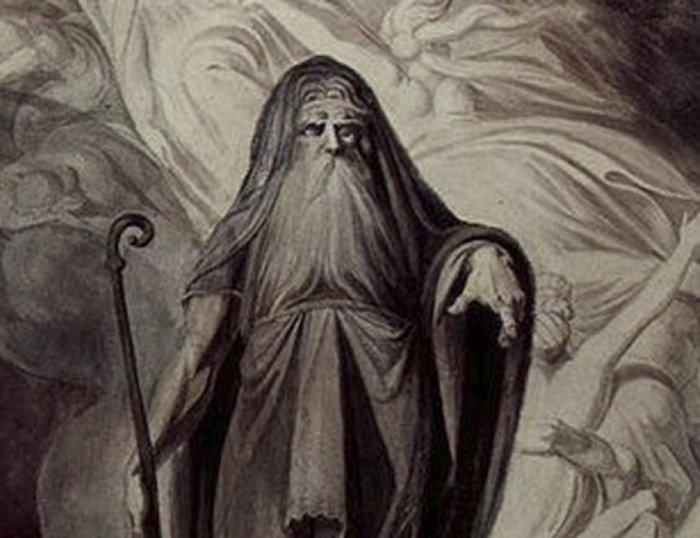Tiresias – Unusual Prophet Who Turned Into A Woman For Seven Years
Ellen Lloyd - AncientPages.com - Some prophets captivate us because they are shrouded in a veil of mystery. There are also those who are interesting due to their curious experiences.
Tiresias was an unusual prophet, who not only unwillingly turned into a woman for seven years, but was also struck blind. His story is remarkable, and it has been suggested there is a deeper meaning behind the tale that should teach us a lesson.
Left: Blind prophet Tiresias - Right: Tiresias as a woman - Credit: Public Domain
In Greek mythology, we often encounter very emotional stories about love, vengeance, desires, jealousies, and betrayal. Greek myths are filled with fascinating characters that involve themselves in acts of passion and heroism. The line between gods and mortals is often very thin. It is by no means uncommon that ancient Greek gods and goddesses act like mortal humans. In the same way, it’s not surprising to find stories about mortals who attempt to be just as powerful as gods.
These dramatic ancient Greek tales have served as an inspiration to many authors who produced great works that we can still enjoy.
Who Was Tiresias?
Tiresias was the son of a shepherd named Everes and a nymph named Chariclo. In Greek and Roman mythology, there are many kinds of nymphs. These young and eternally beautiful daughters of the gods are generally regarded as divine spirits who animate nature and they are often associated with mountains, rivers, or forests.
Tiresias resided in Thebes and is said to have lived for seven generations. Mentioned by many authors like Pindar, Sophocles, Ovid, and Euripides, the life story of Tiresias has become famous. He is also included in Homer’s Odyssey where it is written that his prophetic gift is preserved in Hades, the Greek version of the Underworld.
Tiresias' wisdom was appreciated by those in power and he became an advisor to Cadmus who was the first Greek hero and the founder and first king of Thebes.
Later, Tiresias became famous for his gift of clairvoyance and served as a blind prophet of Apollo in Thebes.
Tiresias Is Punished By Goddess Hera Who Turns Him Into A Woman
Tiresias’ misfortune of becoming a woman happened when he was a young man. One day while walking in the mountains, he saw a pair of snakes copulating right in the middle of the path. He had three choices on how to proceed. He could turn back, continue walking, risking being bitten by the snakes or separate the snakes. Tiresias decided to hit the pair with his stick. When the goddess Hera heard about this she was angry and displeased. As punishment, she turned Tiresias into a woman and he, now being a “she” had to work for Hera as a priestess.
Tiresias strikes two snakes with a stick and is transformed into a woman by Hera. Engraving by Johann Ulrich Kraus c. 1690. Taken from Die Verwandlungen des Ovidii (The Metamorphoses of Ovid). Credit: Yale Beinecke Rare Book and Manuscript Library - Public Domain
Life for Tiresias as a woman couldn’t have been that bad because the female version of Tiresias even married and had children. One of these children was the daughter Manto who was also born with the gift of prophecy.
Seven years later, Tiresias, who was still a woman was walking the same path and encountered once again a pair of copulating snakes. What happened next depends on which version we rely on. Some myths tell Tiresias left the snakes alone while author Gaius Julius Hyginus claims that “she” broke them apart and by doing so Tiresias was transformed back into a man.
Why Was Tiresias Called The Blind Seer?
Tiresias was not blind from the beginning and there are several stories describing how he lost his eyesight. Some think he was blinded by the gods for revealing their secrets, but there are also other suggestions.
According to poet Pherecydes, Tiresias once stumbled upon Athena while she was bathing in a lake. Unable to take his eyes away from the beautiful goddess, Tiresias was punished and became blind.
His mother, Chariclo, begged Athena to remove the curse, but the goddess was unable or unwilling to do so. Instead, she cleaned his ears and Tiresias was given the gift of augury and could now understand birdsong.
Another version of the story reveals that Tiresias lost his eyesight during an argument between god Zeus and goddess Hera.
“One evening, while Zeus and Hera were dining, Zeus drank excessively of the nectar of the gods. “Hera,” he slurred, “you know, women enjoy lovemaking more than men ever do.” Hera stiffened.
“No, Zeus, men do. Or, at least, you must enjoy lovemaking an awful lot, or why would you always be on the prowl?” Zeus was caught. It was true that Hera never strayed, but he couldn’t believe his gender gained more pleasure in bed. Hera was equally unwavering in her opinion. Yet, as neither had any proof, the only way to solve the argument was to find someone who knew both sides of the story.
When Tiresias came before Zeus and Hera to answer that famous question, “Who enjoys lovemaking more?” he smiled and replied, “That’s simple. A woman receives nine times as much pleasure from lovemaking as does a man.”
Zeus let out a hearty chortle, but Hera, always a sore loser, struck Tiresias blind. Zeus pitied Tiresias’s sightless state and offered him a gift. It was the sight of a different sort— prophecy, the gift of prescient knowledge. This is why we call Tiresias “the blind seer.” (Shoshanna Kirk - Greek Myths: Tales of Passion, Heroism, and Betrayal)
Tiresias And His Gift Of Prophecy
In order to learn about future events, Tiresias often turned to nature. He listened to birds and understood their language. Pliny the Elder credits Tiresias with the invention of augury, the practice from ancient Roman religion of interpreting omens from the observed flight of birds.
Many of Tiresias’s prophetic visions were based on pictures appearing within the smoke of burnt offerings, but his most reliable source was communication with the dead who gave him answers.
Tiresias in the Underworld, Hades. Credit: Public Domain
The prophecies of Tiresias can be found in the Odyssey where he talks to the spirits. In Sophocles' Oedipus Rex, Oedipus, the king of Thebes demands to know who has killed the previous king Laius. The blind prophet reveals, it is Oedipus himself who is responsible for the murder. There are many ancient works about the interesting prophet Tiresias and his revelations. His life story is also featured in some modern novels.
Readers interested in mythology should know that several myths of Tiresias were included in the Bibliotheca and ancient Greek compilation of myths and legends that were arranged into three books.
Tiresias’ transformation into a woman gave him a better understanding of the female psyche and the world women live in. We often hear that women and men cannot understand each other, and see the world differently. However, the lesson to be learned from Tiresias’ story is that it may be wise to at least take some time and try to view the world from the opposite sex's perspective.
Tiresias’ myths are filled with important symbols. Readers of Ancient Pages know why a snake is a symbol of medicine and pharmacies.
Tiresias’s encounter with the snakes on two occasions has a symbolic meaning.
In ancient Greece, snakes were regarded as a symbol of regeneration.
The story of the unusual, blind prophet was ended when Tiresias died after drinking water from the tainted spring Tilphussa, where he was struck by an arrow of Apollo. Tiresias descended to Hades, the Underworld but his gift of prophecy was not lost. It is said that even Odysseus, the legendary Greek king of Ithaca visited Hades and sought Tiresias’ advice.
Written by Ellen Lloyd – AncientPages.com
Copyright © AncientPages.com All rights reserved. This material may not be published, broadcast, rewritten or redistributed in whole or part without the express written permission of AncientPages.com
Expand for referencesMore From Ancient Pages
-
 Illegal Gold-Hunting Diggers Damaged Sudan’s 2,000-Year-Old Historic Site
Archaeology | Aug 24, 2020
Illegal Gold-Hunting Diggers Damaged Sudan’s 2,000-Year-Old Historic Site
Archaeology | Aug 24, 2020 -
 Impressive And Rare Hoard Of Silver Coins Dated To The Hasmonean Period (126 BC) – Studied
Archaeology | Oct 14, 2021
Impressive And Rare Hoard Of Silver Coins Dated To The Hasmonean Period (126 BC) – Studied
Archaeology | Oct 14, 2021 -
 Invisible Ink On Antique Nile Papyrus From The Island Of Elephantine – Revealed
Archaeology | Aug 21, 2019
Invisible Ink On Antique Nile Papyrus From The Island Of Elephantine – Revealed
Archaeology | Aug 21, 2019 -
 Ancient European Buildings Form A Sacred Symbol When Viewed From The Air – Scientist Reveals
Ancient Symbols | Jun 15, 2018
Ancient European Buildings Form A Sacred Symbol When Viewed From The Air – Scientist Reveals
Ancient Symbols | Jun 15, 2018 -
 Medusa – Cursed By Athena And Killed By Perseus
Featured Stories | Jul 30, 2018
Medusa – Cursed By Athena And Killed By Perseus
Featured Stories | Jul 30, 2018 -
 Baffling Unexplained ‘Alien’ Condition – Evidence Of Unknown DNA?
Featured Stories | Jan 6, 2021
Baffling Unexplained ‘Alien’ Condition – Evidence Of Unknown DNA?
Featured Stories | Jan 6, 2021 -
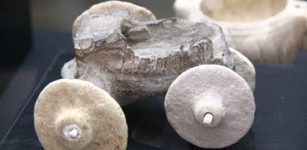 World’s Oldest Toy Car – Could This 7500-Year-Old Discovery Be The Earliest Evidence Of The Wheel?
Artifacts | Sep 1, 2018
World’s Oldest Toy Car – Could This 7500-Year-Old Discovery Be The Earliest Evidence Of The Wheel?
Artifacts | Sep 1, 2018 -
 Ancient Monuments The World Is Not Allowed To See – Forbidden Zone – Part 2
Featured Stories | Aug 27, 2020
Ancient Monuments The World Is Not Allowed To See – Forbidden Zone – Part 2
Featured Stories | Aug 27, 2020 -
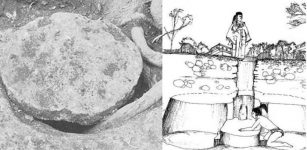 Mysterious Chultuns – Ancient Underground Chambers Built By The Maya – But For What Purpose?
Featured Stories | Jun 24, 2017
Mysterious Chultuns – Ancient Underground Chambers Built By The Maya – But For What Purpose?
Featured Stories | Jun 24, 2017 -
 Ancient Native American Stories Of Great Floods In Tennessee Confirmed By Scientists – 1867 Flood Was Not The Worst One
News | Aug 26, 2020
Ancient Native American Stories Of Great Floods In Tennessee Confirmed By Scientists – 1867 Flood Was Not The Worst One
News | Aug 26, 2020 -
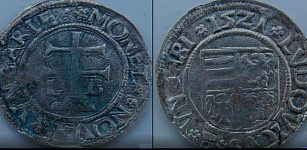 Treasure Coins Dated To 15th And 16th Century Unearthed In Historical Region Of Slovakia
Archaeology | Apr 17, 2019
Treasure Coins Dated To 15th And 16th Century Unearthed In Historical Region Of Slovakia
Archaeology | Apr 17, 2019 -
 Aboriginal ‘Memories’ Of Australia’s Coastline Go Back More Than 7,000 Years
Civilizations | Sep 30, 2015
Aboriginal ‘Memories’ Of Australia’s Coastline Go Back More Than 7,000 Years
Civilizations | Sep 30, 2015 -
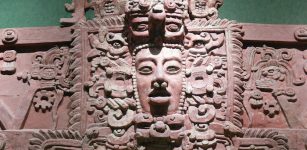 Fixing Archaeology’s Dating Problem – New Method Developed By Scientists
Archaeology | Sep 17, 2021
Fixing Archaeology’s Dating Problem – New Method Developed By Scientists
Archaeology | Sep 17, 2021 -
 Biblical Jonah Visits Nineveh – The Evil City
Biblical Mysteries | Nov 9, 2018
Biblical Jonah Visits Nineveh – The Evil City
Biblical Mysteries | Nov 9, 2018 -
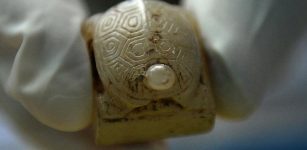 Rich 2,000-Year-Old Chinese Tomb May Reveal Secret Identity Of Its Owner
Archaeology | Dec 18, 2015
Rich 2,000-Year-Old Chinese Tomb May Reveal Secret Identity Of Its Owner
Archaeology | Dec 18, 2015 -
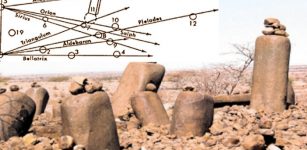 Namoratunga – Kenya’s Fascinating Megalithic Site Oriented Toward Specific Stars And Constellations
Featured Stories | Jul 6, 2021
Namoratunga – Kenya’s Fascinating Megalithic Site Oriented Toward Specific Stars And Constellations
Featured Stories | Jul 6, 2021 -
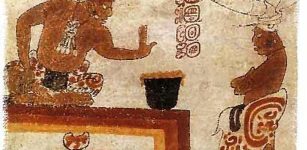 Chocolate Was Invented In Mesoamerica 1900 B.C.
Ancient History Facts | Jan 17, 2016
Chocolate Was Invented In Mesoamerica 1900 B.C.
Ancient History Facts | Jan 17, 2016 -
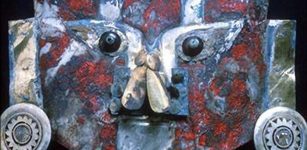 Red Paint On 1,000-Year-Old Gold Mask From Peru Contains Human Blood Proteins
Archaeology | Nov 1, 2021
Red Paint On 1,000-Year-Old Gold Mask From Peru Contains Human Blood Proteins
Archaeology | Nov 1, 2021 -
 Controversial Hollow Earth Theory – Startling Discoveries And Different Conclusions – Part 2
Featured Stories | Jun 25, 2019
Controversial Hollow Earth Theory – Startling Discoveries And Different Conclusions – Part 2
Featured Stories | Jun 25, 2019 -
 Man In Sweden Finds Viking Age Skeleton In His Garden
Archaeology | Jun 30, 2023
Man In Sweden Finds Viking Age Skeleton In His Garden
Archaeology | Jun 30, 2023



